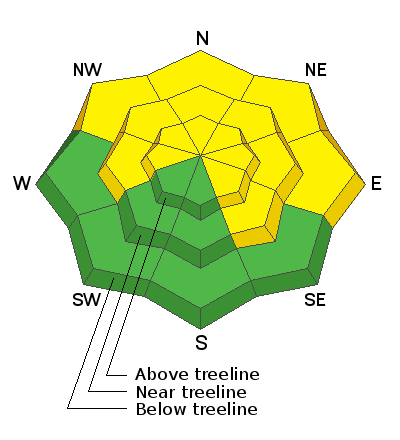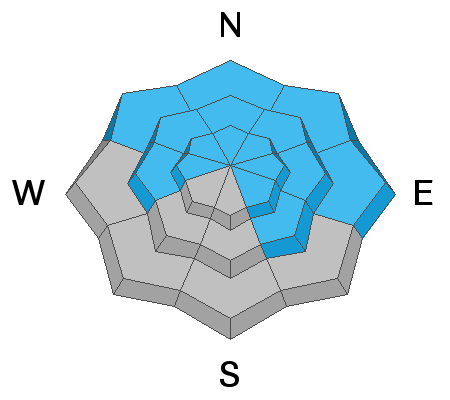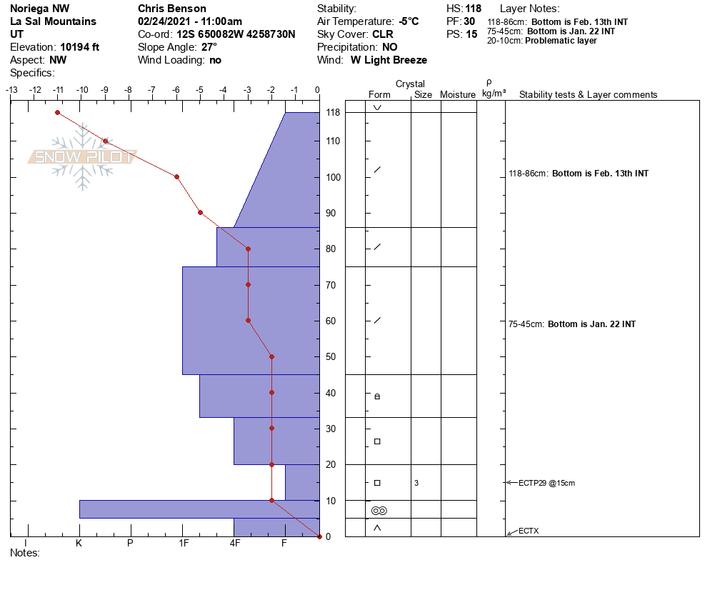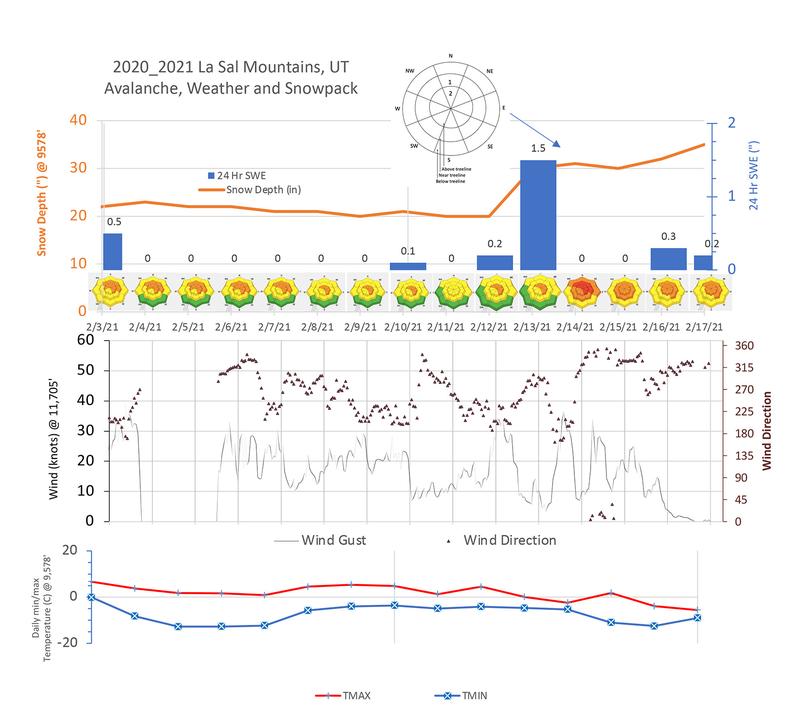The Geyser Pass Road was plowed last week. It is snow-packed, icy, and slick. 4x4 with good tires is recommended.
The Lower Utah Nordic Alliance (LUNA) will be up grooming this afternoon.
24 Hour Snow 0" 72 Hour Snow 0" Base Depth in Gold Basin 48" Wind WNW 10-15 Temp 12 F
Another sunny day is in store with light to moderate NW winds and high temps in the low to mid 20's. A shortwave trough moving into the region will bring snow to the north with little more than clouds and a very slight chance of precipitation to our area tonight and tomorrow. Dry conditions return Sunday and into early next week. Models are currently in disagreement over what happens after that but there are no obvious big storms on the horizon.
Snowpack Discussion
Warm temperatures and time have helped consolidate the snowpack, but weak layers are still present, especially in shady areas at higher elevations. In my travels through south-facing terrain yesterday, I found thin and variable snow cover and crusted surfaces. Soft settled powder still exists on sheltered, northerly aspects. Outward signs of instability are far and few between but on Wednesday, Chris Benson still experienced localized whumpfing on a ridgeline where the snowpack was thinner and weaker. A poor snowpack structure still exists and on slopes facing NW-N-SE a slab 1'-3' thick exists on top of buried, weak, facets. These slabs are becoming harder to trigger but once released they would produce deep and dangerous avalanches. Likely trigger points include shallower areas along slope margins, around sparse trees or rock outcroppings, or on repeat running slide paths. It's a gamble out there right now, and it's not a chance any of the forecasters or observers I know are willing to take.
Chris Benson sums up conditions in the video below:











